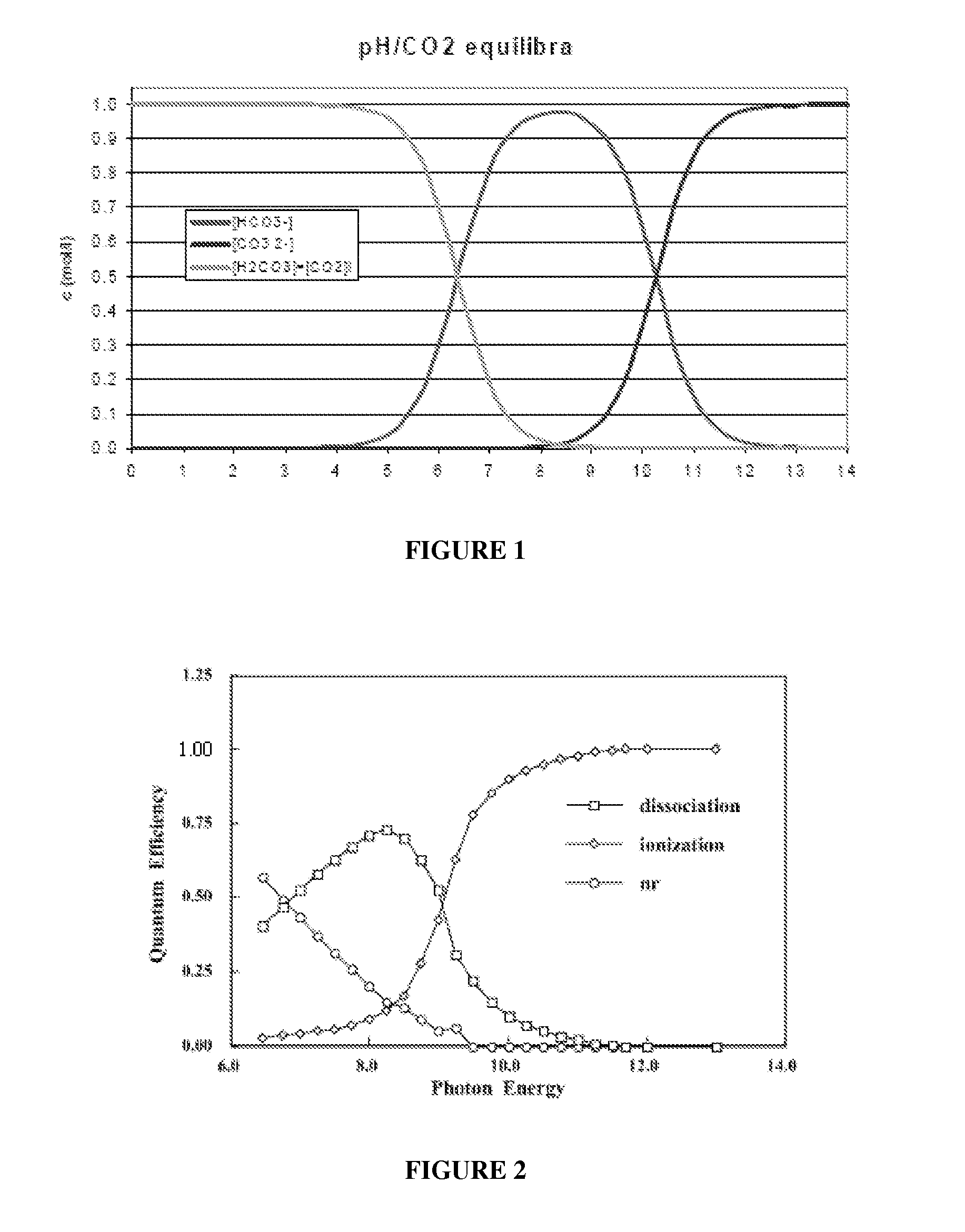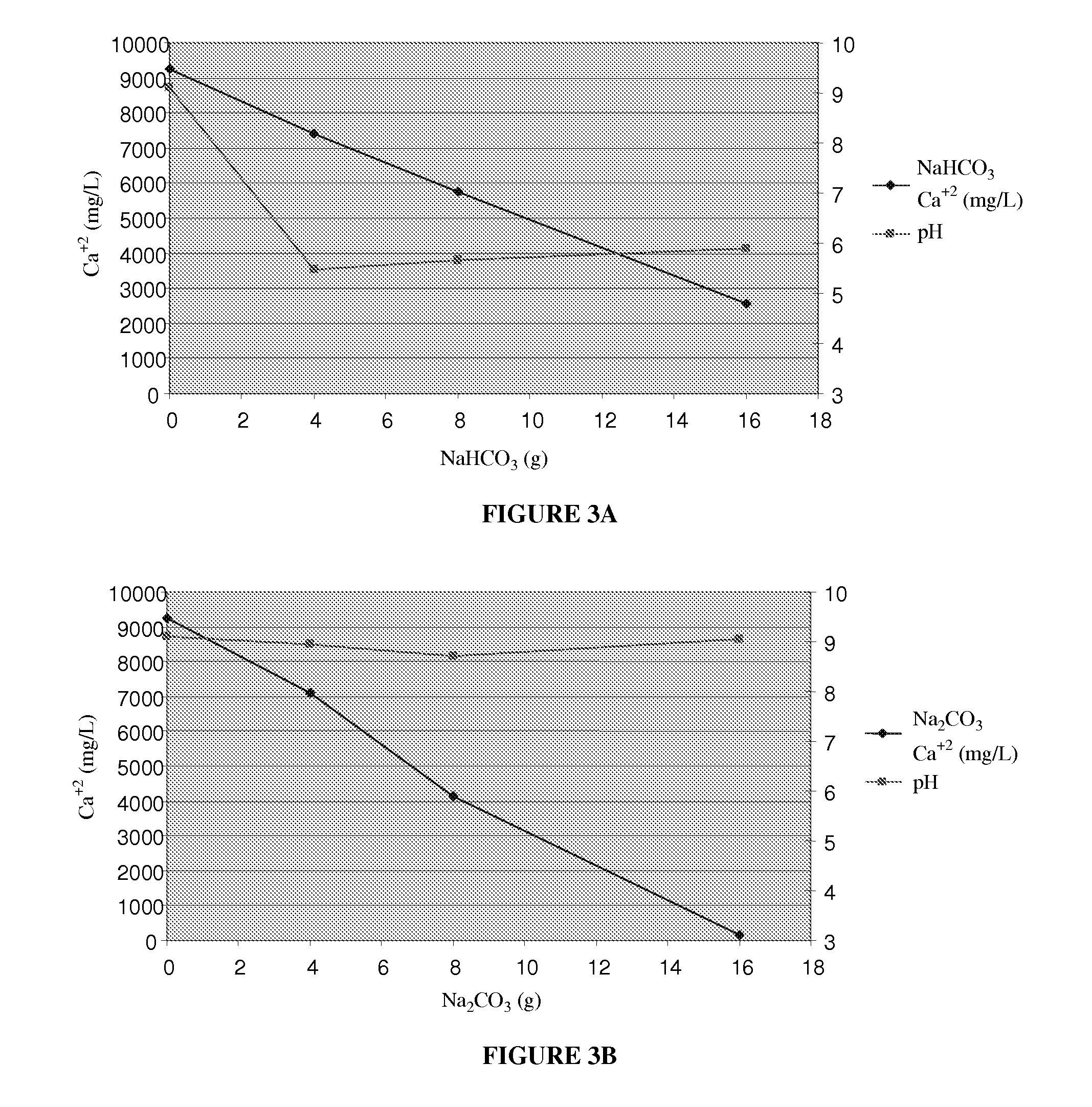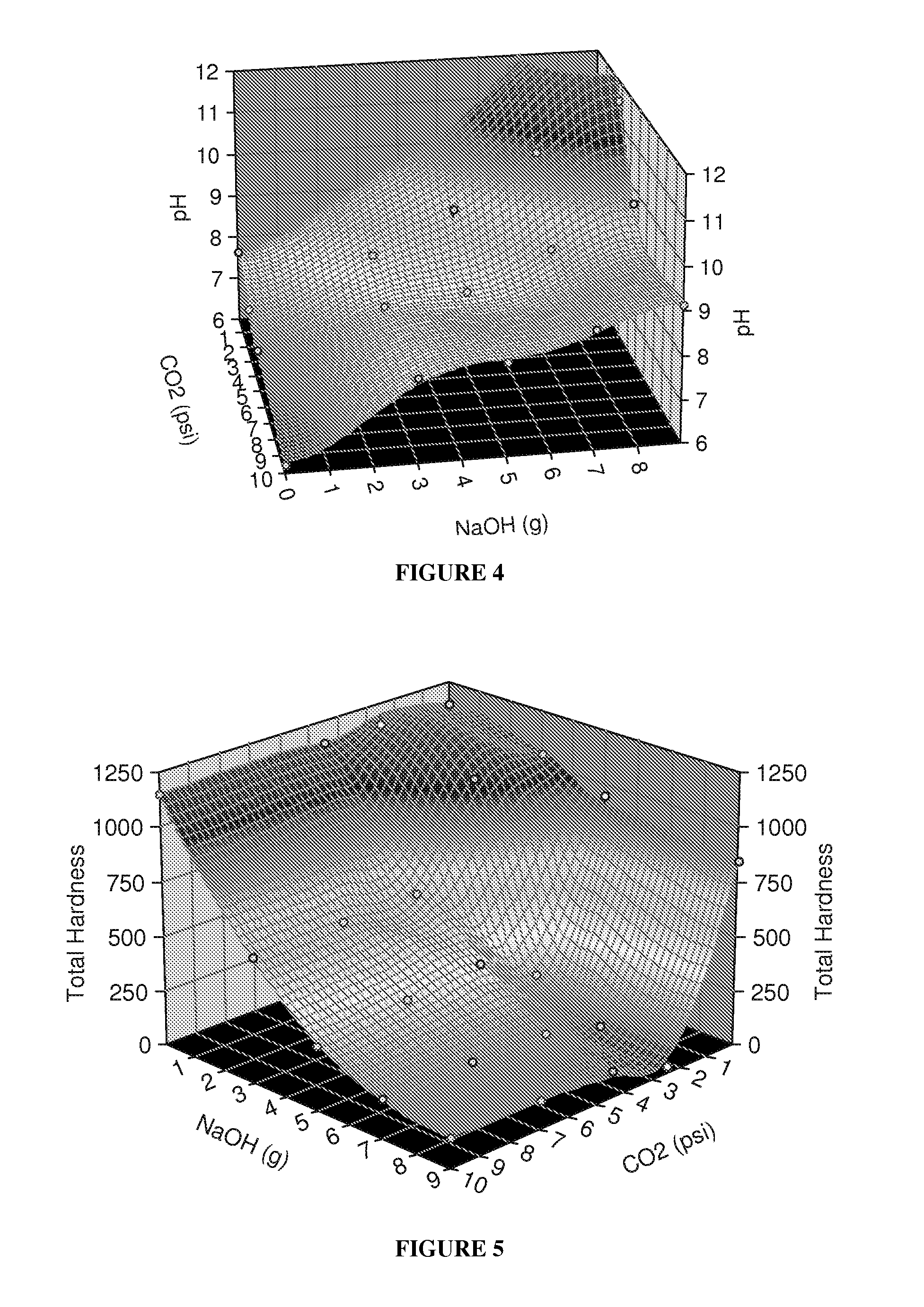Removing Carbon Dioxide From Gaseous Emissions
a technology of gaseous emissions and carbon dioxide, which is applied in the direction of separation processes, hydrogen sulfides, sulfur compounds, etc., can solve the problems of insufficient industrial scale efficiency, too costly, and even more, so as to reduce the amount of total industrial waste and increase the overall yield of removing carbon dioxide removal and/or metallic water pollutants.
- Summary
- Abstract
- Description
- Claims
- Application Information
AI Technical Summary
Benefits of technology
Problems solved by technology
Method used
Image
Examples
example 1
[0059]Source waters from three separate oil & gas geological basins having different levels of metallic ions were evaluated and treated (Barnett Shale, Piceance and Denver Julesburg). See Table I. Hardness ions are considered to be calcium, magnesium, strontium, manganese, barium, iron, copper, and other metallic ions which readily form insoluble carbonate compounds.
[0060]Barnett Shale water samples were treated with NaHCO3 and soda ash Na2CO3. The amount of calcium ion concentration decreased significantly as the amount of sodium bicarbonate and sodium carbonate addition increased as shown in FIGS. 3A and 3B.
[0061]Experiments were conducted using pressurized CO2 as the carbonate source instead of adding solid sodium bicarbonate or sodium carbonate.
[0062]Experiments were conducted on Barnett Shale water and Piceance Basin water using water which had been carbonated with CO2 and then dosed with NaOH. Test results are shown below:
TABLE 1Basin Water Starting and Ending CharacteristicsS...
example 2
[0087]The Corona Discharge was produced through a needle apparatus. For these experiments a single needle was used. However, for treating a large volume of water, multiple needles resistively coupled in parallel can be used. It is believed that Corona Discharge produces OW, OH radicals, and other ions in-situ. These ions react with the hardness ions, Ca2+, Mg2+, Sr2+, to produce hydroxides, Ca(OH)2, Mg(OH)2, and Sr(OH)2. These hydroxides are insoluble in water and precipitate out. Under standard conditions, the solubility of these hydroxides are: Ca(OH)2 is 0.185 g per 100 mL; Mg(OH)2 is 0.0012 g per 100 mL; and Sr(OH)2 is 1.77 g per 100 mL. Thus, by forming hydroxides and precipitating out these metal ions, the corona discharge reduces the overall hardness of the water. This experiment examines whether enough OH was produced by corona discharge to soften the water and quantifies the amount or percentage of hardness ion reduction.
example 3
[0100]Barnett Shale water is extremely hard water coming from Texas. See Table 1 in Example 1. It includes a large amount of the following ions sodium, calcium, strontium, magnesium, potassium, barium, ferrous iron, aluminum, chloride, bicarbonate, and sulfate. Because of the quality of Barnett Shale water, it cannot be used for fracing due to scaling. An experiment was conducted to remove these hardness ions, which included adding baking soda (sodium bicarbonate, NaHCO3) and raising the pH, as well as adding soda ash (sodium carbonate, Na2CO3) in a step wise fashion.
Experimental
[0101]Conductivity and pH measurements of Barnett Shale water were taken initially using a Hach CDC401 IntelliCAL Standard Conductivity probe connected to a Hach HQ 40d meter and a Thermo Scientific Orion Ross Sure-Flow pH probe connected to a Hach SenseIon3 pH meter, respectively. Total hardness and calcium hardness were determined using Hach methods 8213 and 8204, respectively. The calcium hardness titrati...
PUM
| Property | Measurement | Unit |
|---|---|---|
| Acidity | aaaaa | aaaaa |
| Acidity | aaaaa | aaaaa |
| Mass | aaaaa | aaaaa |
Abstract
Description
Claims
Application Information
 Login to View More
Login to View More - R&D
- Intellectual Property
- Life Sciences
- Materials
- Tech Scout
- Unparalleled Data Quality
- Higher Quality Content
- 60% Fewer Hallucinations
Browse by: Latest US Patents, China's latest patents, Technical Efficacy Thesaurus, Application Domain, Technology Topic, Popular Technical Reports.
© 2025 PatSnap. All rights reserved.Legal|Privacy policy|Modern Slavery Act Transparency Statement|Sitemap|About US| Contact US: help@patsnap.com



